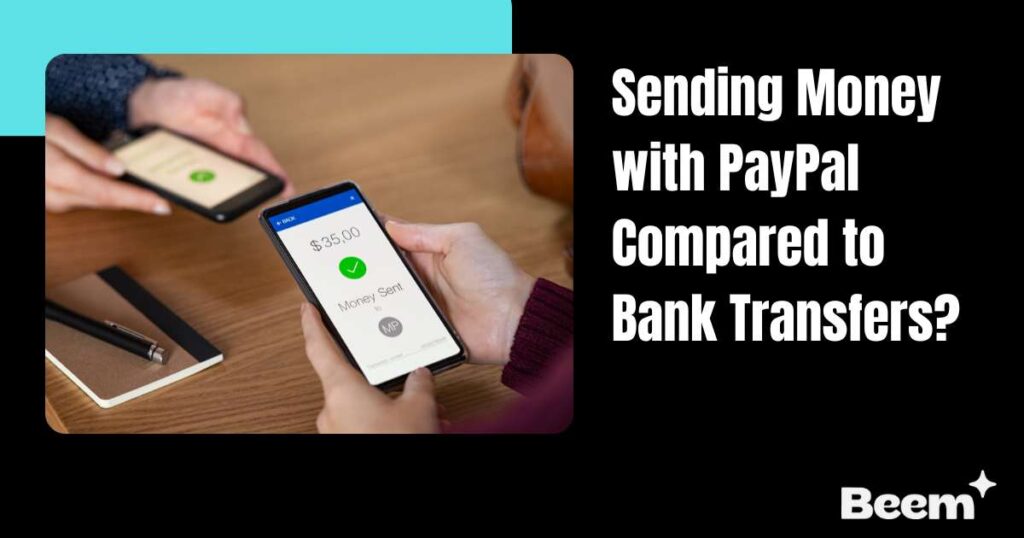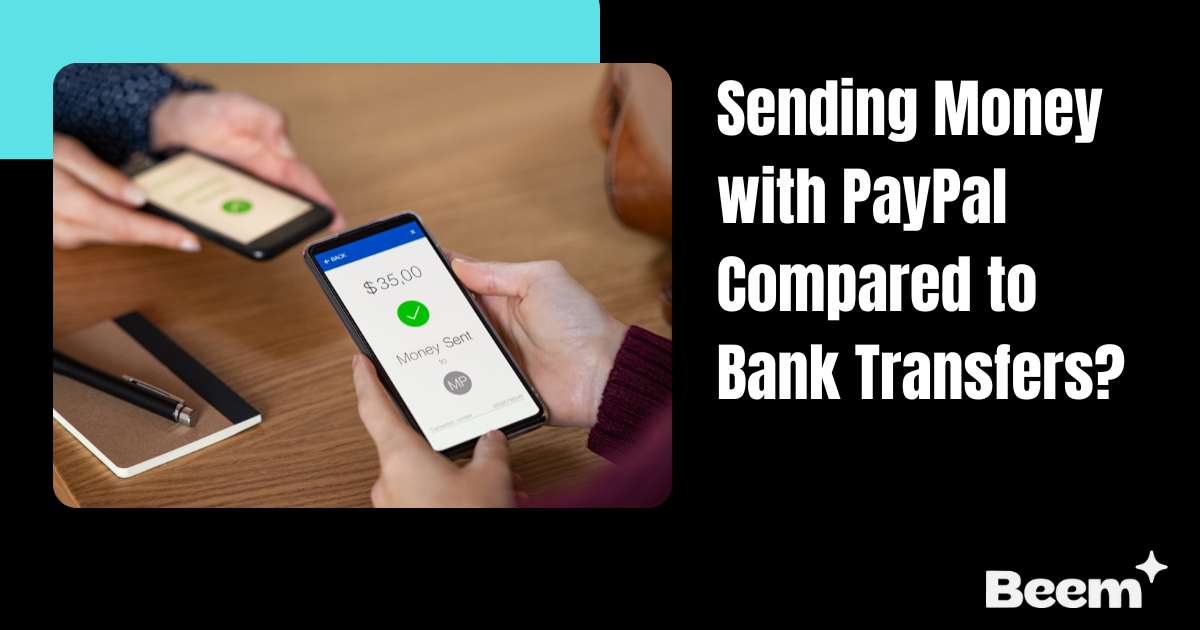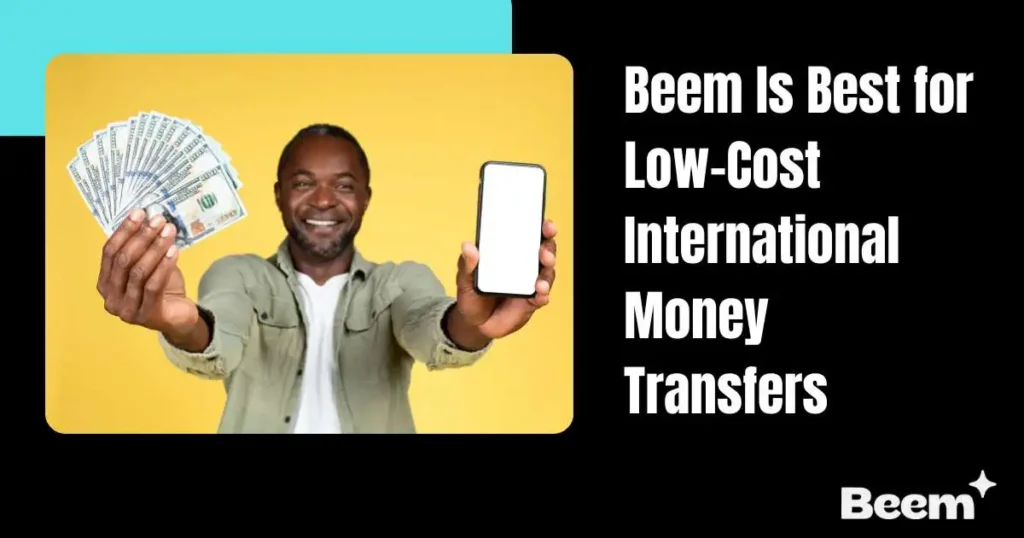At a Glance
Sending money has transformed over the past 20 years. The banking and wire services that used to rule the day have been replaced by digital options that need virtually no setup (and no face time) and are far quicker and simpler. Sending money with PayPal has become especially popular. At the top of the list are PayPal and traditional bank transfers, two processes that serve the same purpose but are very different. You are not alone if you wonder which is better for sending money.
The decision to use PayPal or bank transfers comes down to speed, cost, convenience, or security; choose your priority. If it is paying back a friend for dinner or sending money to a relative overseas, your priorities may be to get it done quickly and with low fees.
PayPal offers a user-friendly, app-based experience where you only need an email or phone number to transfer money. It works excellently for peer-to-peer payments and freelancers and is available in over 200 countries. In contrast, bank transfers, whether domestic or international, require more formal steps, including bank account details and sometimes SWIFT or IBAN codes. But they’re time-tested, secure, and reliable, especially for significant or recurring payments.
In this guide, we’ll discuss the pros and cons of each method, including speed, fees, accessibility, and safety, to help you make an informed decision. Whether you’re sending $20 or $20,000, knowing when to use PayPal and when to stick with your bank can save you time, money, and hassle.
1. Overview: PayPal vs. Bank Transfers
What is PayPal?
PayPal permits individuals to send and receive money using only an email address or phone number. Users don’t have to deal with bank account numbers; they associate their PayPal account with their debit/credit account, credit/debit card, or bank account, and the rest is done from a single platform. Finally, you can keep a balance directly in PayPal, so you can buy or pay without touching your bank account.
EBay was initially popularized by eBay but has since become a widely used financial instrument, allowing millions of people to transact at low friction across borders. With features like invoicing, currency conversion, and even integration with partner service Xoom for remittances, PayPal has become more than just a peer-to-peer payment tool; it’s a versatile ecosystem.
What is a Bank Transfer?
NemoBank transfer is an old-fashioned way of moving funds from one bank account to another. This can be for domestic or foreign payments (e.g., ACH, SWIFT, SEPA, or internal banking networks). While sending money through PayPal only needs an email address or your ID, bank transfers need more formal information, such as the name of the bank, account number, routing code, and sometimes, SWIFT or IBAN codes.
Bank transfers are central to consumer and corporate finance. They are used for payroll, supplier payments, and large purchases, and they are used more often than not. Even if bank transfers are slower and less convenient than they used to be with digital wallets these days, they are still one of the safest and most standardized ways to move money, especially at scale.
See Also: How to Send Money Without a Bank Account?
2. Speed of Transfer
PayPal
PayPal is known for its speed, especially for domestic PayPal-to-PayPal transactions. These transfers are often instant or take just a few minutes to show up in the recipient’s account, making them ideal for last-minute payments or splitting bills in real time.
When sending money internationally, PayPal’s partner service, Xoom, can often deliver funds within the same day, though this depends on the destination country, currency, and receiving method. In most cases, international PayPal transfers are processed in 1 to 2 business days, which is still faster than many traditional bank systems.
Bank Transfers
Bank transfer speed varies significantly depending on the type and destination. Domestic transfers using ACH typically take 1 to 3 business days to process. Some banks now offer real-time or same-day transfers, which often apply only to transfers within the same bank or country.
International bank transfers can take longer. Using the SWIFT system, cross-border payments may take 2 to 5 business days to arrive, especially if intermediary or correspondent banks are involved. Time zone differences, weekends, and holidays can cause additional delays.
3. Fees and Costs
PayPal
Sending money to friends or family within the U.S. is one of the big selling points of PayPal, and that service is free if you pay with your PayPal balance or a bank account linked to your account. If you pay with a credit or debit card to fund it, though, there will be fees, typically 2.9 per cent to 3.5 per cent.
Being international, these transactions come with additional costs. Among them are flat fees, percentage-style fees, and currency conversion fees that typically sit somewhere between 3 per cent and 5 per cent. PayPal takes a commission from merchants on any business transaction.
Bank Transfers
Domestic bank transfers, especially those using ACH, are often free or come with nominal fees. However, wire transfers, used for faster or international payments, can be expensive. Sending a domestic wire might cost between $10 and $50, while international wires can range from $30 to $70 or more.
Another hidden cost with international bank transfers is the foreign exchange (FX) margin. Banks usually offer less favorable exchange rates than currency markets, quietly pocketing the difference. This can make international bank transfers more expensive than they first appear.
Read related blogs: Which Countries Offer the Cheapest International Money Transfers?
4. Ease of Use and Accessibility
PayPal
PayPal is exceptionally user-friendly. Signing up requires only an email address and phone number, and you can send or request money without knowing the recipient’s banking details. Transactions can be completed through the web platform or mobile app, and PayPal supports over 200 countries and multiple currencies.
Its intuitive interface, flexible funding sources, and instant notifications make it a go-to option for people who value speed and simplicity. Even those with limited banking access can receive money by creating a PayPal account, which is helpful in regions with low financial infrastructure.
Bank Transfers
Bank transfers are more formal and often complicated, especially for first-time users. You’ll need to input accurate details like the recipient’s name, account number, bank name, and often routing or SWIFT codes. Any mistake can lead to delays or funds being returned.
Additionally, not all banks offer international transfer capabilities online. Some require in-person visits or phone verification. While robust and secure, the traditional banking interface isn’t always friendly or intuitive, particularly for casual or one-off users.
5. Security and Buyer Protection
PayPal
PayPal invests heavily in fraud detection, encryption, and buyer/seller protection policies. If a user makes a purchase and doesn’t receive what was promised, PayPal can freeze funds, investigate disputes, and reverse transactions. This gives users security, especially when dealing with unknown parties.
However, PayPal also has the power to freeze accounts or hold funds during disputes or suspicious activity. While meant to protect users, this can be frustrating for freelancers or businesses relying on quick cash flow.
Bank Transfers
Bank transfers are inherently secure because they use encrypted systems and are monitored by financial institutions. However, they offer little recourse if something goes wrong. Once a bank transfer is initiated and processed, it cannot be reversed. That makes it safer for recipients but riskier for senders, especially in cases of fraud or mistake.
Generally, bank transfers are best suited for situations involving known, verified recipients or formal business dealings where reversibility isn’t a concern.
6. Best Use Cases For Sending Money with PayPal Compared to Bank Transfers

PayPal
PayPal is excellent for fast, small, or peer-to-peer transfers. Whether you’re paying a freelancer overseas, splitting a restaurant bill, or sending birthday money to a relative abroad, it’s quick and easy. It’s also widely accepted by online merchants and marketplaces, making it a convenient tool for e-commerce.
Because of its fee structure and reversibility, it’s best for lower-value or medium-risk transactions where ease and speed are priorities.
Bank Transfers
Bank transfers are the method of choice for large, formal, or high-stakes transactions. Businesses use them to pay vendors and employees or make cross-border investments. They’re also ideal for recurring bills or standing orders like rent, utilities, or tuition.
Because of their finality and security, bank transfers are better suited for trusted relationships and formal arrangements where dispute resolution mechanisms are not needed.
7. Pros and Cons Summary
| Feature | PayPal | Bank Transfers |
| Speed | Instant to 1 day | 1–5 business days |
| Fees | Low (domestic), moderate (intl.) | High, especially for wires |
| Ease of Use | Very user-friendly | Requires more detailed knowledge |
| Security | Reversible, good protection | Irreversible, bank-level encryption |
| Best For | Small, quick transfers | Large or formal payments |
Above is a quick comparison of PayPal vs. bank transfers based on key features such as speed, cost, ease, and security.
Conclusion: Choosing Between PayPal and Bank Transfers
PayPal is one solution for sending money, but it has its own niche, which is a little different than a direct and traditional bank transfer. Knowing their strengths and weaknesses will offer the guide you need to always make the right decision.
PayPal remains a favorite for the speed, ease, and global reach it provides. It is easy to use and excellent for quick and casual payments: repaying a mate, paying a freelancer a tip, or making a small international transfer. It also features strong buyer and seller protection, which increases the security of online purchases. However, this convenience may lead to cost, particularly for overseas remittance or business transactions that attract larger currency conversion fees.
On the other hand, bank transfers offer security, reliability, and a sense of permanence that PayPal doesn’t. They’re ideal for large transfers, formal payments, or recurring obligations like rent or payroll. Once the money is sent, it’s final, meaning there’s no risk of reversal or unexpected account freezes. While slower and sometimes more expensive (particularly for international wires), they remain preferred for high-value transactions or regulated business activity.
Ultimately, there’s no one-size-fits-all answer. Your best option depends on the amount you’re sending, who you’re sending it to, and how quickly you need it delivered. PayPal is often the better pick for fast, small-scale, or informal payments. Stick with a traditional bank transfer for larger, formal, or highly secure transactions.
Try the Beem app. It is an emerging platform that lets users send money online quickly and affordably, offering features like “Send Now, Pay Later™.” It’s beneficial for U.S.-based users who want flexible, fee-transparent international transfers. Learn more at Beem.






